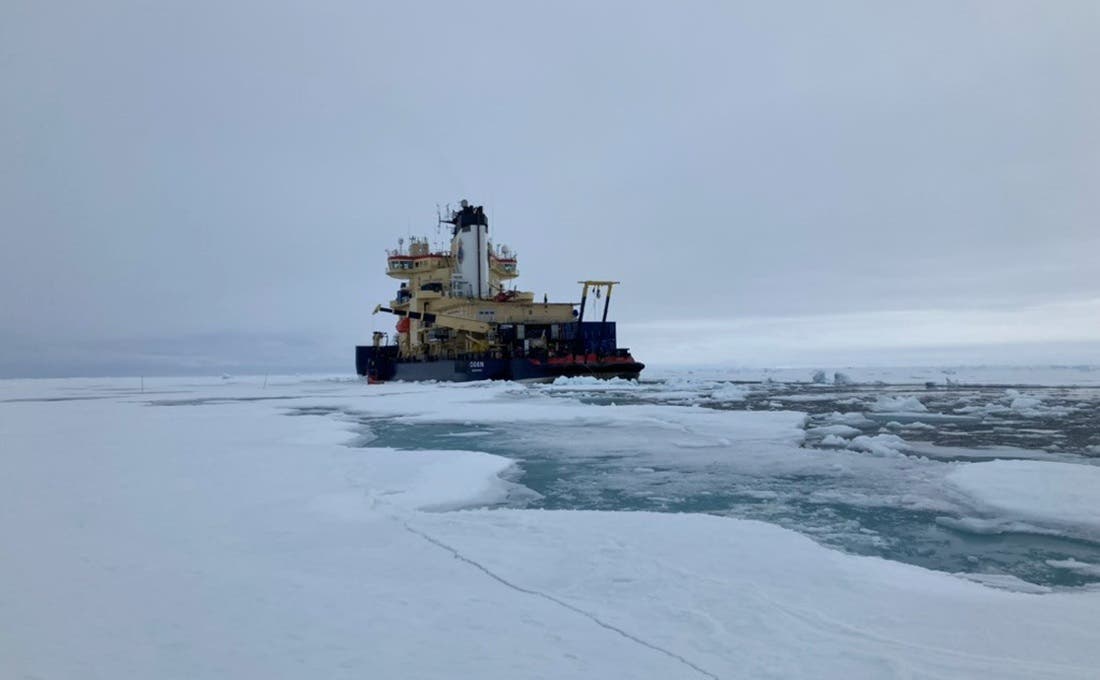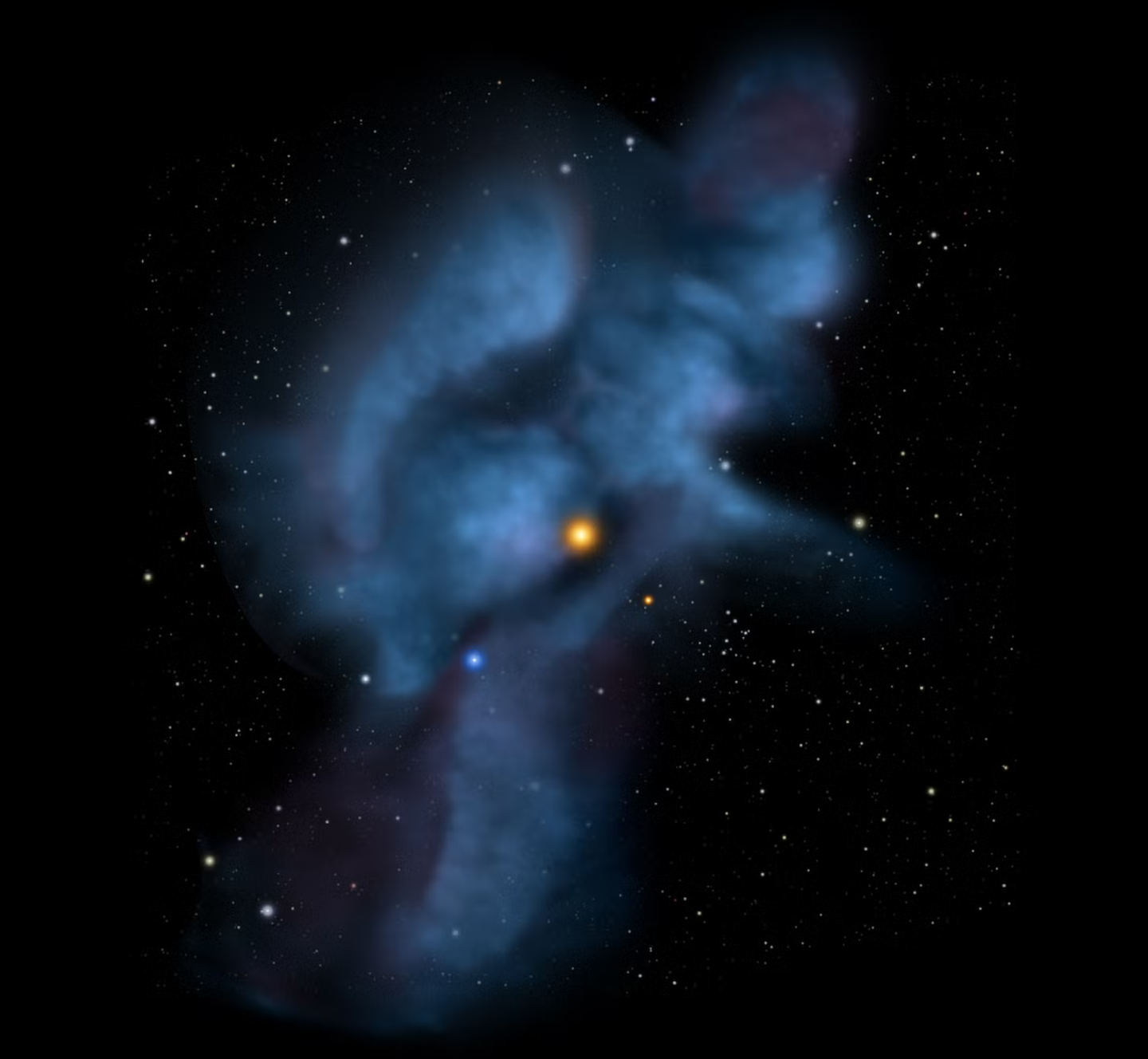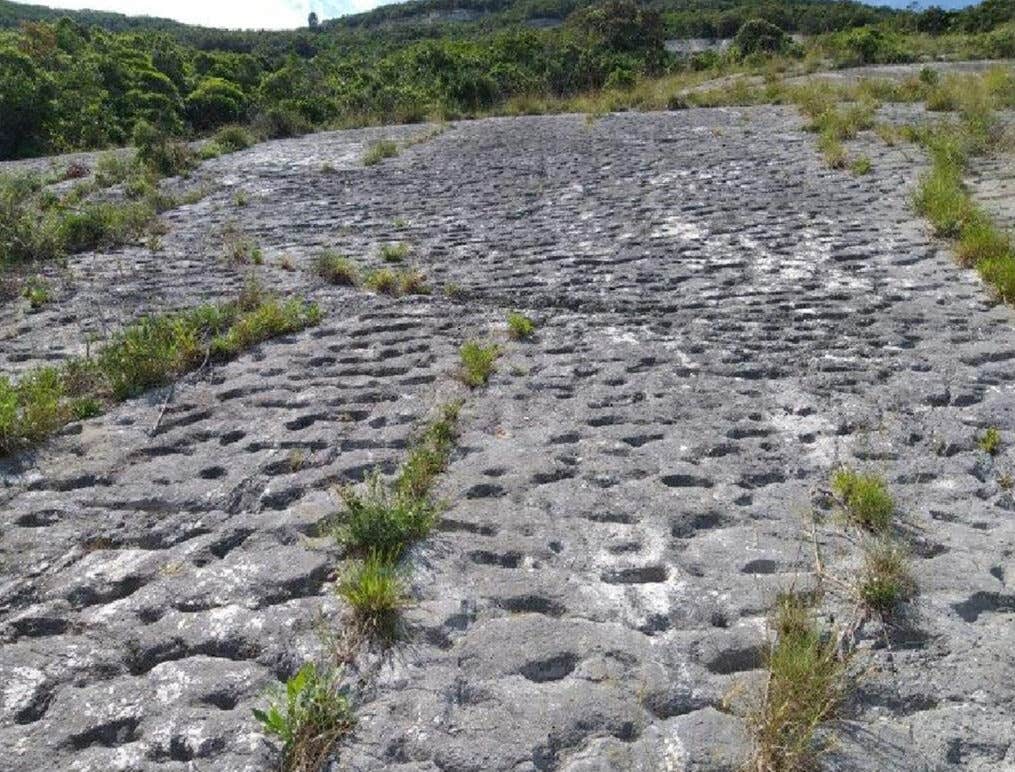Hidden bacteria beneath the Arctic ice could boost ocean life
A new study reveals that Arctic microbes are fixing nitrogen beneath the ice, fueling algae growth and potentially boosting CO₂ absorption as sea ice melts.

Measurements were taken at 13 different locations in the Arctic Ocean. (CREDIT: Lisa W. von Friesen)
The Arctic Ocean, once locked in a vault of thick, old ice, now is transforming at lightspeed. Temperatures there are increasing at up to four times the rate of the planet overall, melting sea ice that once shielded the ocean surface. With the ice removed, sunlight can penetrate deeper into the water, remodeling the entire marine food web from bacteria to large sea animals.
One of the surprises from this melting world is that nitrogen, one of the most crucial nutrients in life, can be restored in ways no one previously thought possible. For decades, researchers believed that the Arctic's frozen, cold waters had nearly zero fixation of nitrogen, which is the process by which certain microbes can convert nitrogen gas into forms that other animals can use. But an international study led by researchers at the University of Copenhagen turned that idea on its head.
A New Source of Life in the Arctic Ocean
Nitrogen fixation is microbial alchemy. Certain microorganisms referred to as diazotrophs harvest molecular nitrogen (N₂) out of the air—usually out of reach for most life—and transform it into ammonium, a nutrient that powers the growth of algae and the remainder of the marine food web.
In warmer oceans, cyanobacteria do the work. But in the central Arctic, where things are harsher, researchers found that a whole different set of players is getting the job done: non-cyanobacterial diazotrophs, or NCDs.
So far, we believed that it was not possible for nitrogen fixation in the sea ice because we believed the conditions were too harsh for the organisms which are responsible for nitrogen fixation. We made a mistake," said study leader Lisa W. von Friesen, a previous PhD student at the Department of Biology at the University of Copenhagen.
The discovery shows that not only is nitrogen fixation occurring at the ice edge, where the melting is most intense, but under thick, multiyear ice in the central Arctic Ocean as well. That means nitrogen, until now thought to be in short supply in the Arctic, is being quietly cycled and replenished back into the system even under ice.
Measuring the Invisible
The researchers investigated levels of nitrogen fixation within several Arctic settings: the Central Arctic Ocean (CAO), where thick ice remains; the Marginal Ice Zone (MIZ), where melting continues; and shorelines under land-fast ice.
They measured the daily quantity of nitrogen being fixed, as well as a host of other variables—temperature, salinity, and concentrations of nutrients such as phosphate and nitrate—in an effort to understand what triggers the process.
On the CAO, rates of fixation ranged from around 0.4 to 2.5 nanomoles per liter per day, while in the MIZ, zones were as high as 5.3 nanomoles per liter per day. Even within stable, land-fast ice near Greenland, trace but detectable levels were present—indicating the process is widespread on all sea-ice regimes.
Dissolved organic carbon (DOC) that was added to certain samples raised nitrogen fixation rates, suggesting that these Arctic microorganisms thrive under conditions with higher amounts of organic matter—typically released by algae. "These non-cyanobacterial diazotrophs seem to feed on the organic matter released by algae, and they pay that back by supplying fixed nitrogen that enables those algae to grow," von Friesen said.
Microscopic Architects of the Arctic Food Web
They are a world away, under the microscope, from their tropical relatives. Instead of cyanobacteria, they mostly belong to groups that scientists classify as Gamma-Arctic1 and Gamma-Arctic2—microorganisms that dominate in multiyear ice conditions and appear especially vigorous where ice is melting or breaking down.
Quantitative analysis revealed that these microbes were far more abundant and active than anticipated. The scientists found more than 870 forms of genes linked to nitrogen fixation, the majority of which were from these Arctic-specific clades. This strongly indicates that the nitrogen cycle in the Arctic is being dominated to a large extent by non-cyanobacterial microbes.
Their presence could hold the key to explaining how life continues to flourish in nutrient-poor seas. Algae, the foundation of Arctic sea food webs, are dependent to a great extent upon nitrogen. When nitrogen is in short supply, growth among algae decreases, affecting everything from plankton to fish to sea mammals. But if nitrogen fixation occurs more often than initially suspected, it would help to feed these ecosystems during melting ice.
The Ice Edge: A Fertile Frontier
The highest fixation rates of nitrogen were at the ice margin, where meltwater, light, and nutrients come together to allow very good growing conditions. As sea ice recedes and the melt region expands, scientists expect this location to become a hotbed of microbes.
Since algae are the primary food for tiny animals such as planktonic crustaceans, which are eaten by small fish, additional algae can have an indirect effect on the whole food chain," von Friesen stated.
Her colleague, Professor Lasse Riemann, said that these submicroscopic processes may even influence the rate at which the Arctic Ocean takes up carbon dioxide. "If the productivity of algae increases, the Arctic Ocean will take up more CO₂ because more will be trapped in algal biomass," he explained. "For the climate and the environment, this is probably good news—but biological systems are extremely complicated, so it is difficult to make definite predictions.
A New Chapter in Arctic Science
The significance of this finding is great. Nitrogen is one of the most crucial drivers of marine ecosystem productivity. The discovery that Arctic microorganisms fix nitrogen in the presence of sea ice destroys the long-standing assumption that nitrogen addition in the region is minimal.
As the Arctic melts and the ice pulls back, open water area where nitrogen may be fixed will expand explosively. Excess nitrogen means more algae and more to eat for fish and other marine animals. But it might also mean more carbon cycling, and possibly wild swings in ocean chemistry.
Scientists caution that the full effect is unknown. Nitrogen fixation represents only a fraction—sometimes less than 1 percent—of total nitrogen input in wealthier regions. But in the nutrient-poor Central Arctic, it could represent up to 8 percent of the nitrogen needed for plankton growth. That's an important percentage for so remote an ecosystem.
Practical Implications of the Research
The discovery of nitrogen fixation active under Arctic sea ice changes scientists' perspectives about nutrient cycling within one of the world's most rapidly changing ecosystems. It suggests life in the Arctic is perhaps more resilient than predicted, as microbially mediated processes adapt to conditions as ice retreats.
In practice, this could redefine climate models' estimation of ocean productivity and carbon sequestration in polar oceans. If nitrogen fixation increases as the ice cover disappears, the Arctic Ocean can absorb more CO₂, countering some warming effects at least regionally.
The findings also highlight the importance of incorporating microbial activity into future climate predictions. With nitrogen fixation included, models would be able to better calculate the amount of carbon taken in by the Arctic and how alterations in nutrient availability could ripple through the global food web.
Research findings are available online in the journal Communications Earth & Environment.
Related Stories
- Antarctic microbe has major food, cosmetic, and medical potential
- Scientists wake up microbes trapped in Arctic permafrost for 40,000 years
- Oldest preserved Arctic ecosystem discovered in Norwegian cave
Like these kind of feel good stories? Get The Brighter Side of News' newsletter.
Joshua Shavit
Science & Technology Writer and Editor
Joshua Shavit is a Los Angeles-based science and technology writer with a passion for exploring the breakthroughs shaping the future. As a co-founder of The Brighter Side of News, he focuses on positive and transformative advancements in AI, technology, physics, engineering, robotics and space science. Joshua is currently working towards a Bachelor of Science in Business and Industrial Engineering at the University of California, Berkeley. He combines his academic background with a talent for storytelling, making complex scientific discoveries engaging and accessible. His work highlights the innovators behind the ideas, bringing readers closer to the people driving progress.



